Here's something that should worry every marketer: 90% of the web browsing data currently used for advertising is about to disappear. Not might disappear. Not eventually disappear. It's happening right now.
Meanwhile, 76% of consumers are frustrated when brands try to personalize their experience based on assumptions from past behavior. They don't want you to guess what they want based on which pages they visited. They want you to actually understand their needs.
So how do you figure out what customers actually want when traditional tracking is dying? Simple: you ask them.
This is zero-party data, and it's probably the most underused tool in your marketing stack right now.
What Zero-Party Data Actually Is
Zero-party data is information customers intentionally share with you. It's not data you collect by watching what they do or buy from third-party databases. It comes straight from them.
Here's the difference:
- Zero-party data: "I'm looking for something under $50" or "I prefer text messages over emails"
- First-party data: This person clicked on three products and bought one last month
- Third-party data: Demographic info you bought from some external database
Right now, only about 10% of U.S. browsers can still be tracked with cookies when you factor in Safari, Firefox, and Chrome's restrictions. And that number keeps shrinking.
But here's the interesting part: while 63% of consumers don't trust companies with their data, 43% are willing to share their preferences directly if it means getting a better experience.
People don't mind sharing. They just want control over what they share and how it's used.
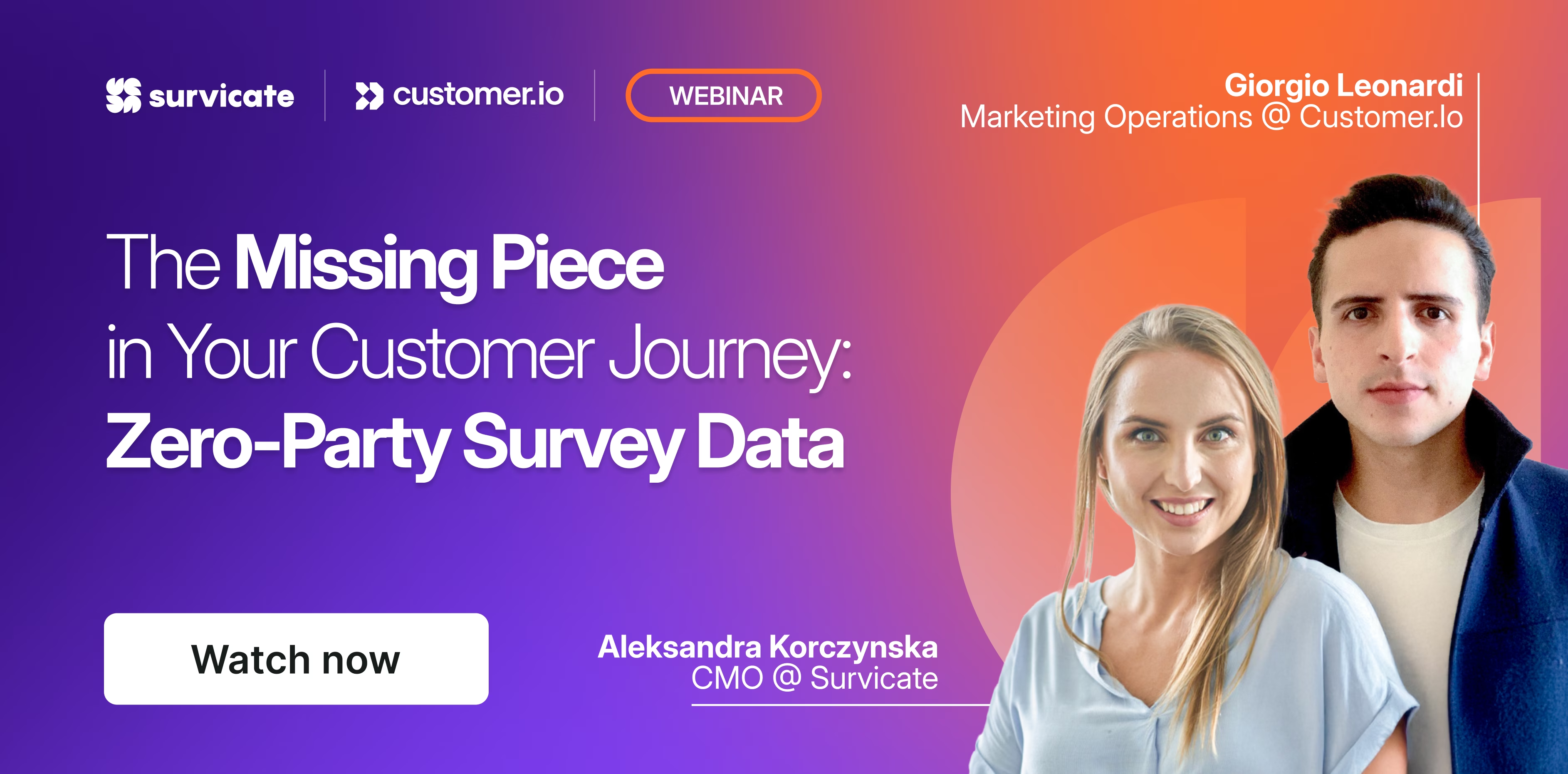
Why This Matters More Than You Think
Only 36% of companies have a solid customer feedback loop. That's a huge gap.
Most brands obsess over behavioral data while barely scratching the surface of what customers would happily tell them if asked. You track every click and scroll, then wonder why your personalization misses the mark.
Think about it this way: you can see that someone visited your pricing page seventeen times and still have no clue if they're comparison shopping, waiting for budget approval, or just confused about which plan fits their needs. A two-question survey would clear that up instantly.
Here's what this looks like in real life:
Without asking: Someone abandons their cart. You send them a 10% discount code. They ignore it because they're actually saving up to buy in a few months and don't want the discount to expire before they're ready. You've just trained them to ignore your emails.
With a simple question: Same cart abandonment. A quick survey pops up: "What's holding you back?" They pick "Planning to purchase later, just browsing." Now you can nurture that relationship instead of bombarding them with discounts they don't need.
The difference? You stopped guessing.
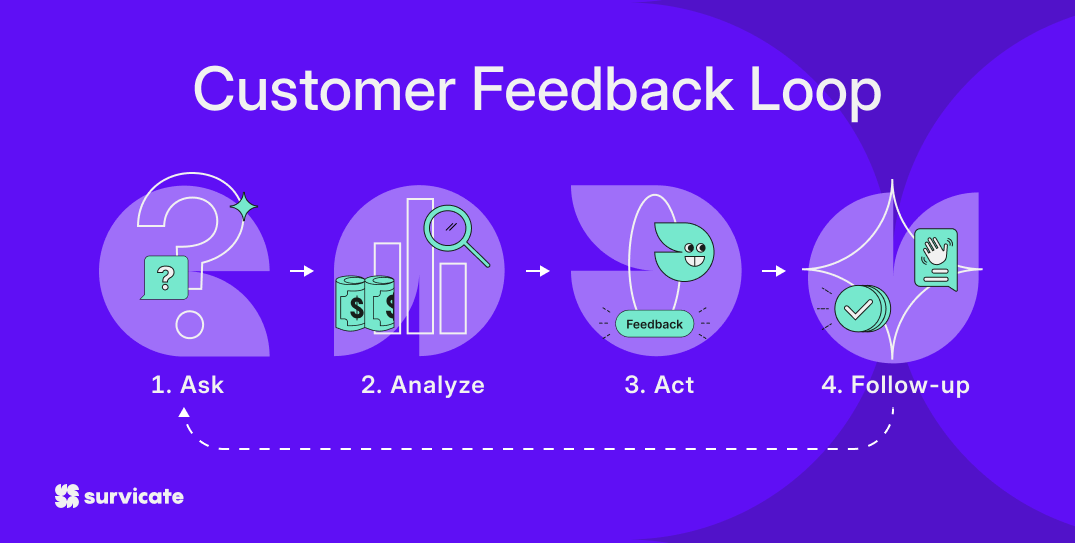
The Numbers Don't Lie
Companies that actually use survey data reduce churn by up to 25%. Brands that collect feedback throughout the customer journey see retention rates jump by 30%.
But here's what matters: it's not just about collecting feedback. It's about doing something with it.
When customers see their feedback actually changes something, they trust you more. They share more detailed responses next time. They stick around longer. It creates this cycle where your relationship actually gets stronger over time.
How to Actually Do This (Without Annoying People)
The good news: collecting zero-party data doesn't mean long, boring surveys nobody finishes. Here's what actually works:
Right after purchase: Someone just bought from you. They're engaged. Ask one question: "What made you choose us today?" You'll learn things behavioral tracking could never tell you.
After they use a new feature: Don't ask generic "How satisfied are you?" questions. Be specific: "Did this feature solve your problem?" The responses become actionable product insights.
Let them set their own preferences: Stop trying to guess how often someone wants to hear from you based on their open rates. Just ask. Let people tell you what they want, then actually respect it.
Check in at key moments: After 30 days, 90 days, six months - ask how things are going. Not to get testimonials, but to genuinely understand if you're meeting their needs.
When they're about to leave: Exit-intent surveys catch people right before they bounce. Keep it simple: "What's stopping you from buying today?" The answers often reveal problems you never knew existed.
The trick: make surveys feel like a conversation, not homework. People are surprisingly generous with feedback when they believe you'll actually use it.
Where Survicate Comes In
This is where tools like Survicate make the whole process easier. Instead of building survey infrastructure from scratch, you can set it up and start collecting feedback in minutes.
What makes it useful: you can trigger surveys based on what people actually do. Someone visits your pricing page three times? Ask them about it. Someone uses a feature for the first time? Get their reaction while it's fresh.
The AI analysis piece matters too. When you're getting hundreds of responses, manually reading and categorizing everything takes forever. Survicate's Insights Hub automatically groups feedback by topic and sentiment, then surfaces patterns you'd otherwise miss.
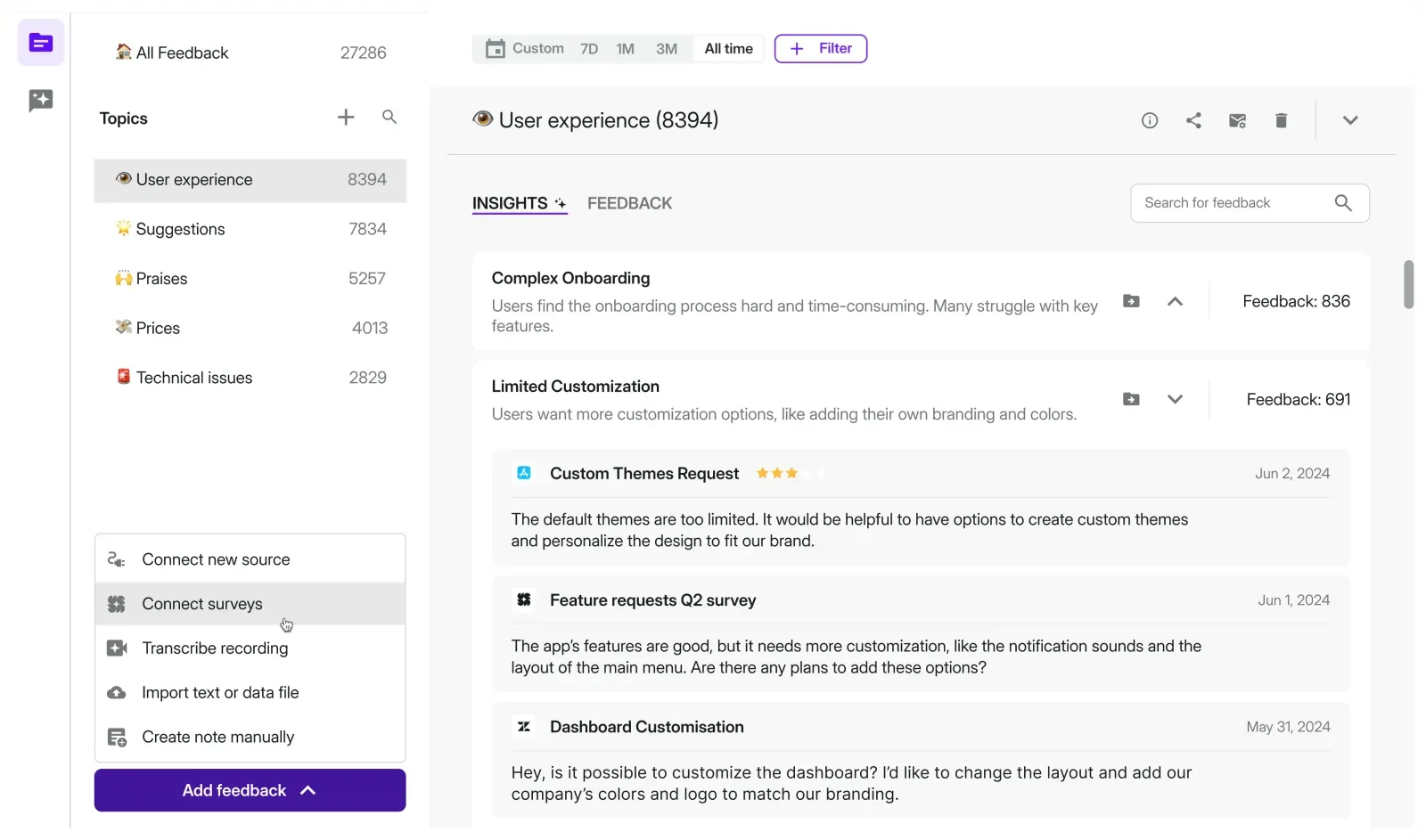
You can also pipe feedback directly into tools you already use—HubSpot, Slack, Zendesk, whatever. So when a customer service rep hops on a call, they can see that the person they're talking to just gave feedback about a confusing checkout process. Context that actually helps.
Here's something interesting: 60% of consumers say they'd trust brands more if companies were upfront about how they use AI.
Modern survey tools use AI in practical ways. First, they adapt questions based on previous answers. Someone says they're unhappy? The next question asks why. Someone says they're thrilled? It asks what specifically they loved. This contextual approach feels more like a conversation than a form.
Second, AI can analyze open-ended responses at scale. When 500 people leave comments, AI can spot that 23% are mentioning the same shipping issue, even if they phrase it differently. That's the kind of pattern that's easy to miss when you're reading responses one by one.
The key: 76% of marketers already use AI for personalization. The winners are those feeding AI both behavioral data and what customers explicitly tell them. That complete picture is what drives better decisions.
Start Simple, Build From There
If you're not systematically asking customers what they want, here's how to start:
Week 1: Pick one question
What's the one thing you keep guessing about? For B2B companies, maybe it's budget timing. For subscriptions, maybe it's what stops people from using features. For e-commerce, maybe it's why people choose you over competitors. Start with one high-impact question.
Week 2: Find the right moment
When would that question feel natural? Post-purchase surveys feel helpful. Mid-checkout surveys feel pushy. Context matters.
Week 3: Set it up
With Survicate, you install a small piece of code that takes a few minutes. Then you can trigger surveys based on user behavior - someone visited a specific page, completed an action, or hit a certain milestone. The setup isn't the hard part.
Week 4: Actually use what you learn
This is where most companies fail. You learn something valuable, then... nothing changes. When you act on feedback, tell customers what you did because of their input. This step turns a survey into a relationship.
From there, expand gradually. Add feedback collection at more points in the journey. Make surveys adapt to individual responses. Connect survey data with your CRM so teams have context before customer conversations.
The brands seeing 25% churn drops aren't running complicated year-long research projects. They're asking simple questions at the right time and actually doing something with the answers.
Behavioral tracking tells you what people do. Zero-party data tells you why they do it.
You need both. First-party analytics on clicks and purchases matter. But they're incomplete without understanding intent.
When someone says "I'm interested in your premium plan but need to convince my boss first," that's information no amount of session tracking will give you. You could watch them visit your pricing page a dozen times and still have no idea what's actually happening in their decision process.
The Trust Factor
Here's what changed: 81% of consumers say how you handle data affects whether they trust you.
Zero-party data offers something behavioral tracking never could- explicit permission. Customers tell you what they want, you use it to serve them better, everyone wins.
When customers see their feedback actually matters, something shifts. They become more invested in your success. They share more thoughtful responses because they've seen proof their input makes a difference.
This isn't feel-good marketing talk. It's the mechanism behind those 30% retention improvements.
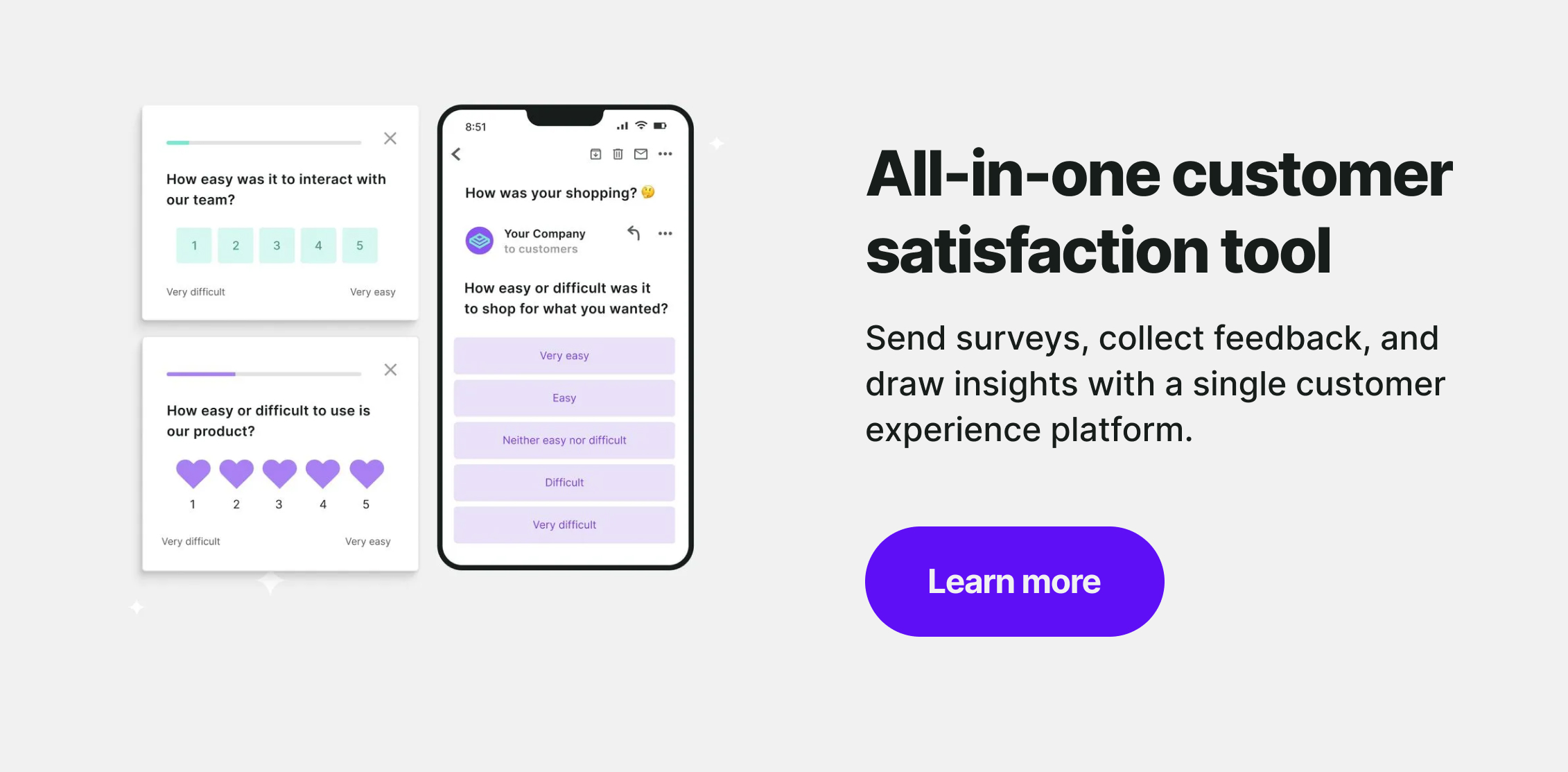
Start Collecting Feedback That Actually Drives Growth
With tools like Survicate, you can have your first survey running today. Your customers are ready to tell you exactly what they need. The question is whether you're ready to ask.
Start with one survey. One question. See what happens when you stop guessing and start knowing.
Because in a world where 72% of consumers only engage with personalization that feels truly relevant, the brands that win won't be those with the most data about their customers. They'll be the ones who actually understand what their customers want, because they took the time to ask.
Ready to start? Sign up for Survicate and launch your first survey today.








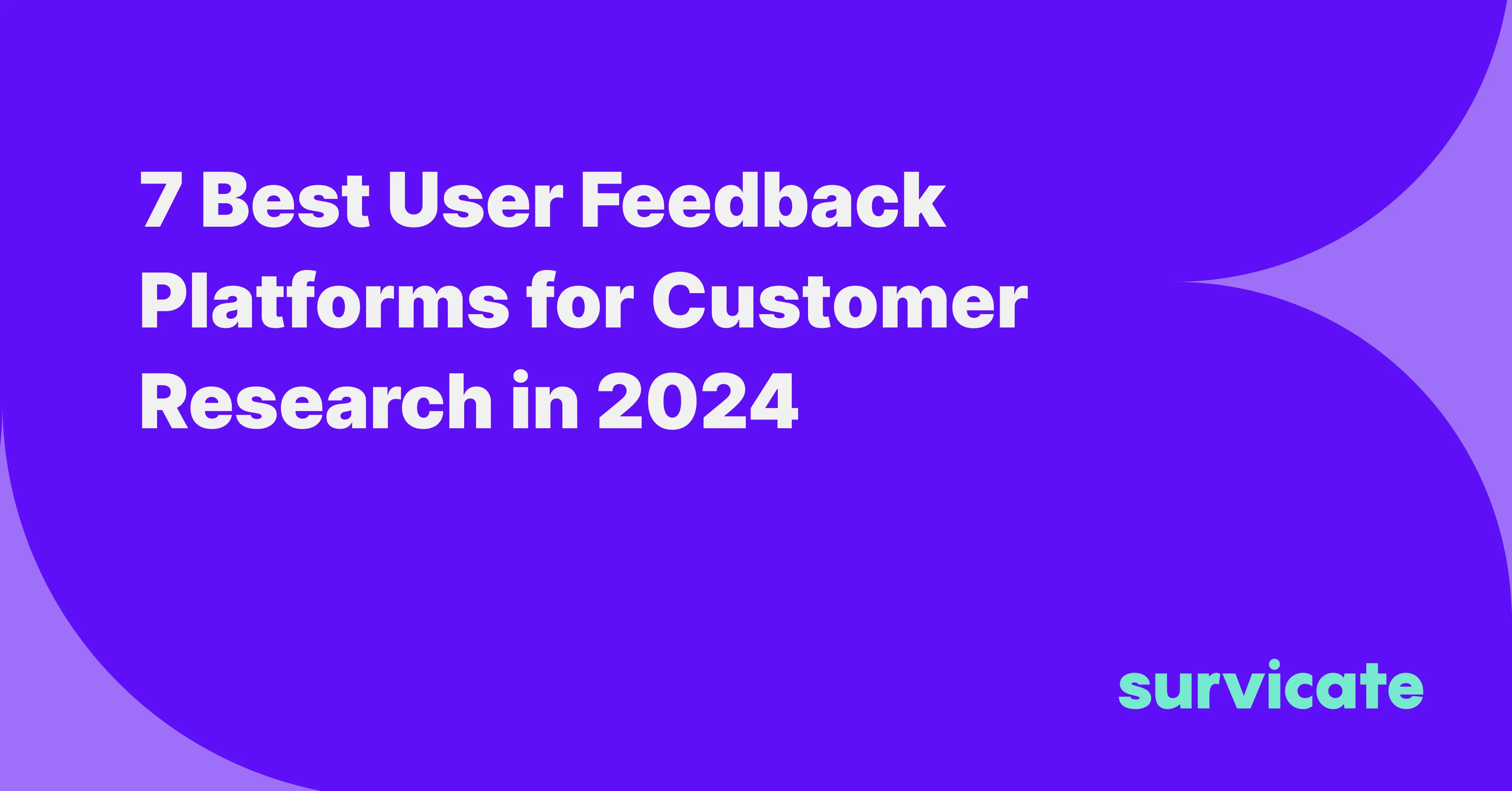

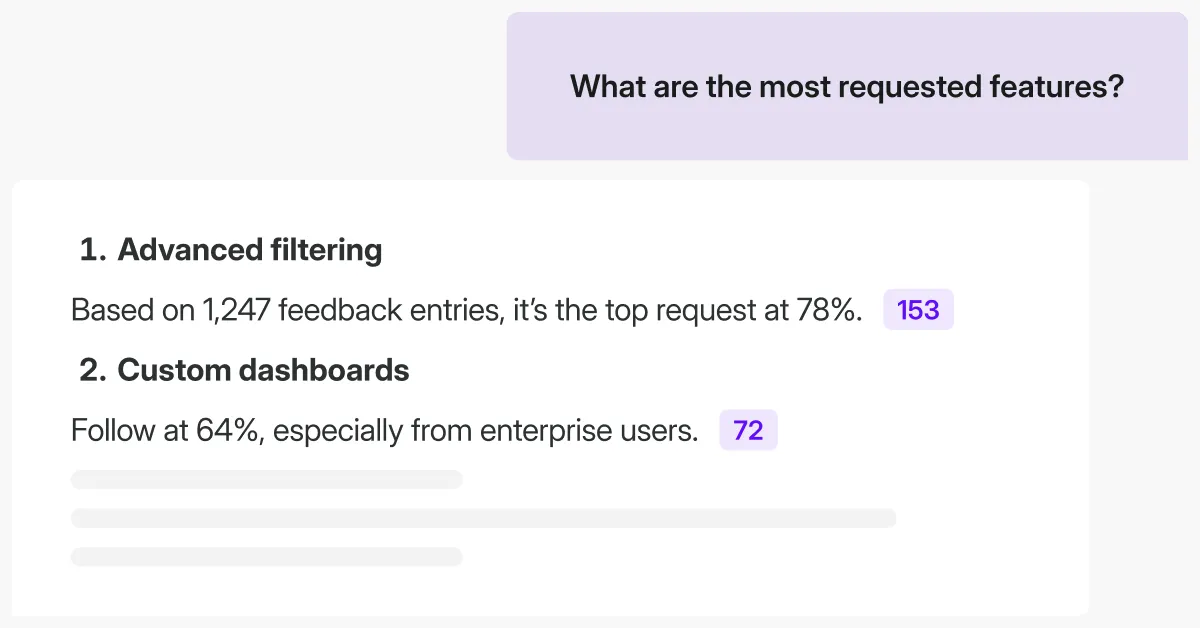
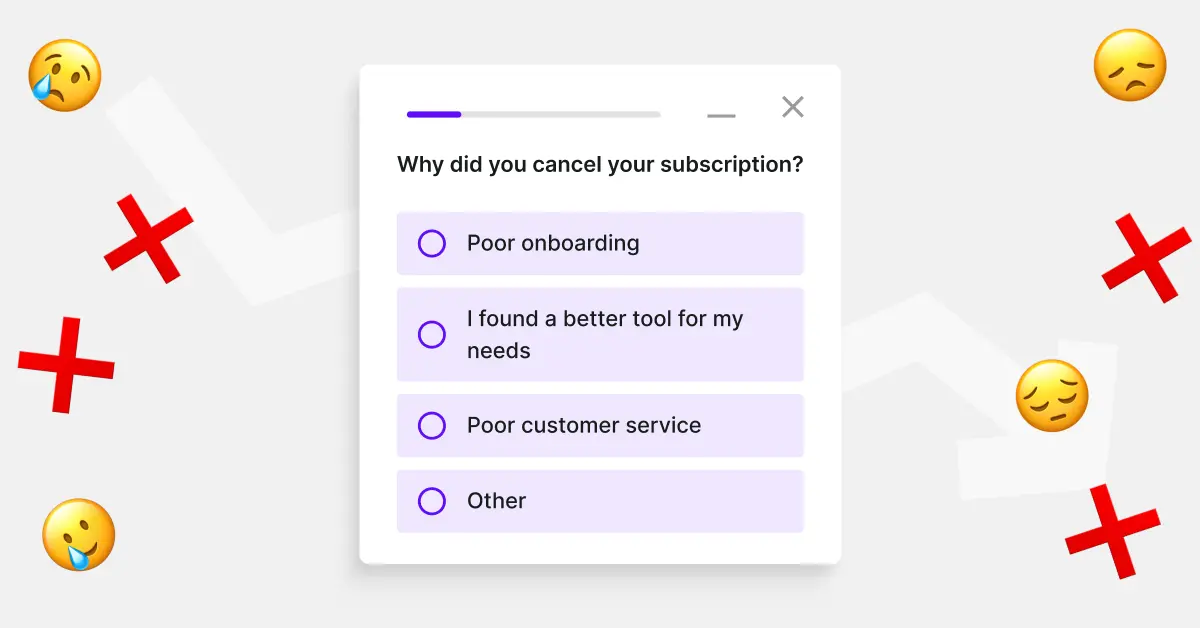
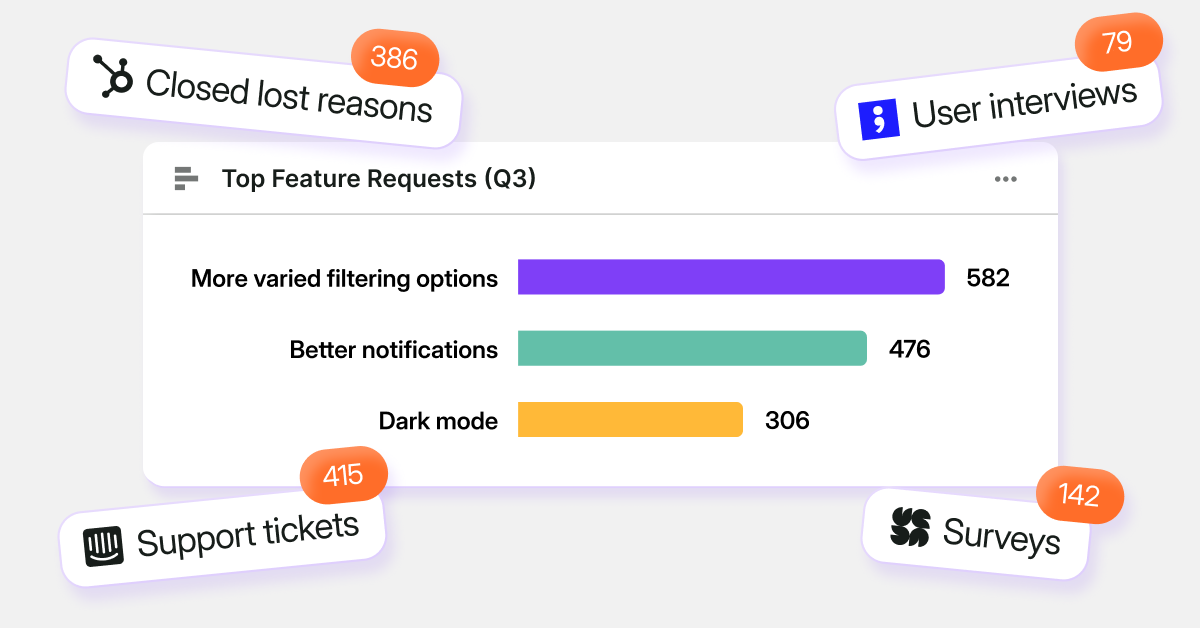
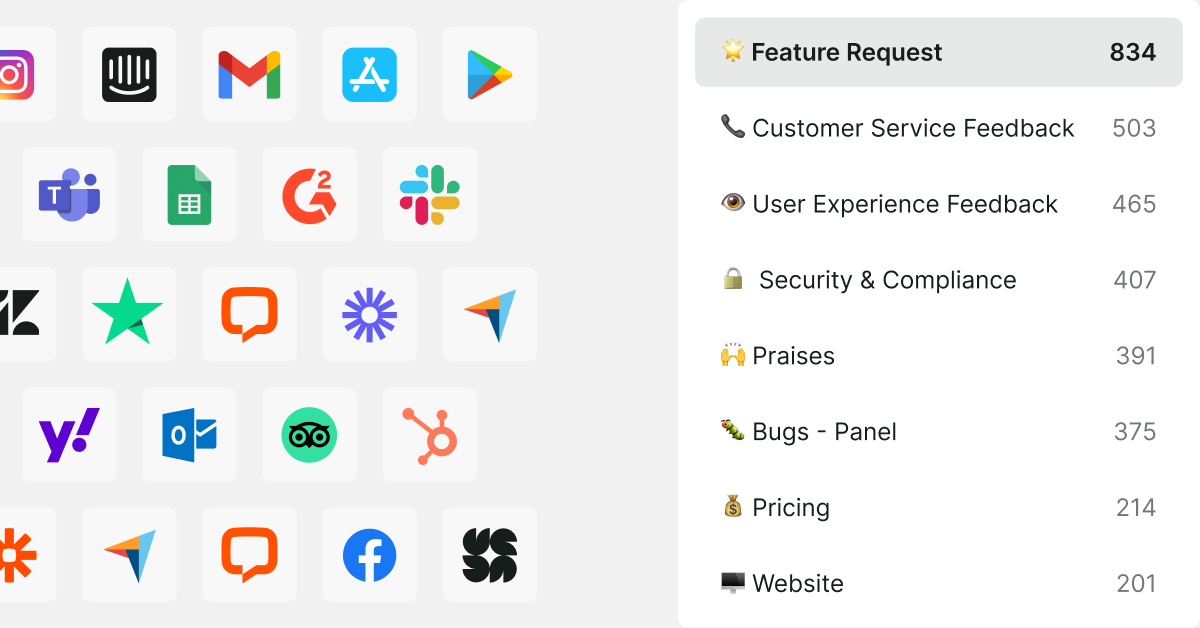
.svg)

.svg)



